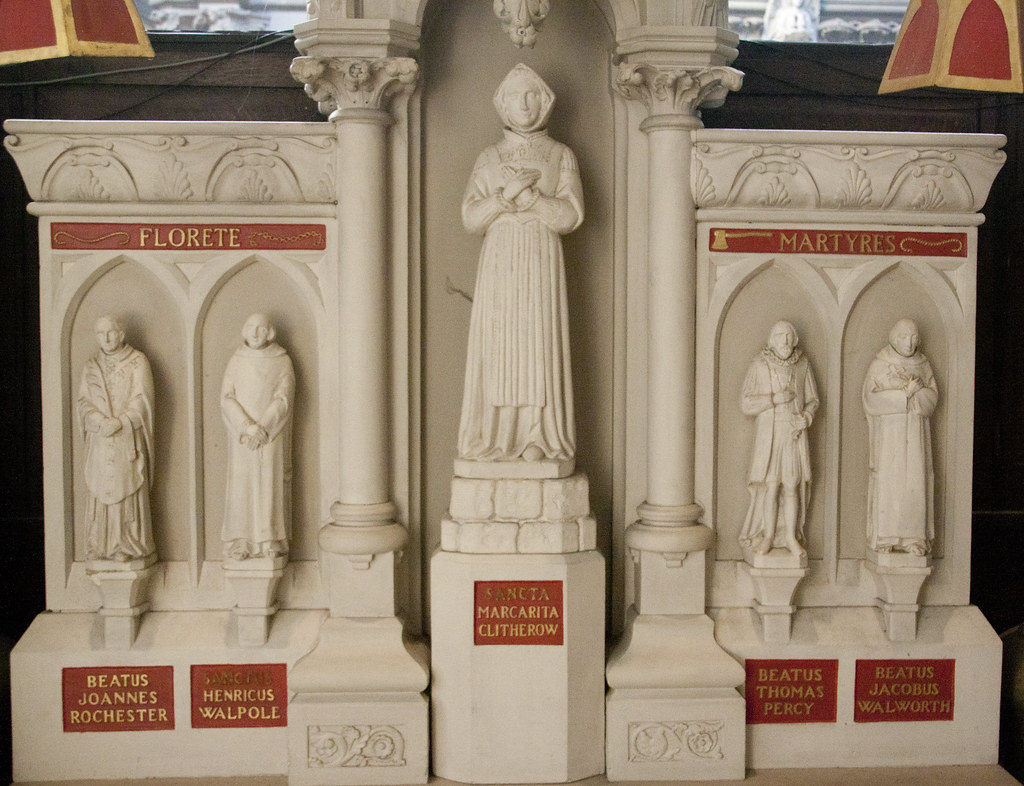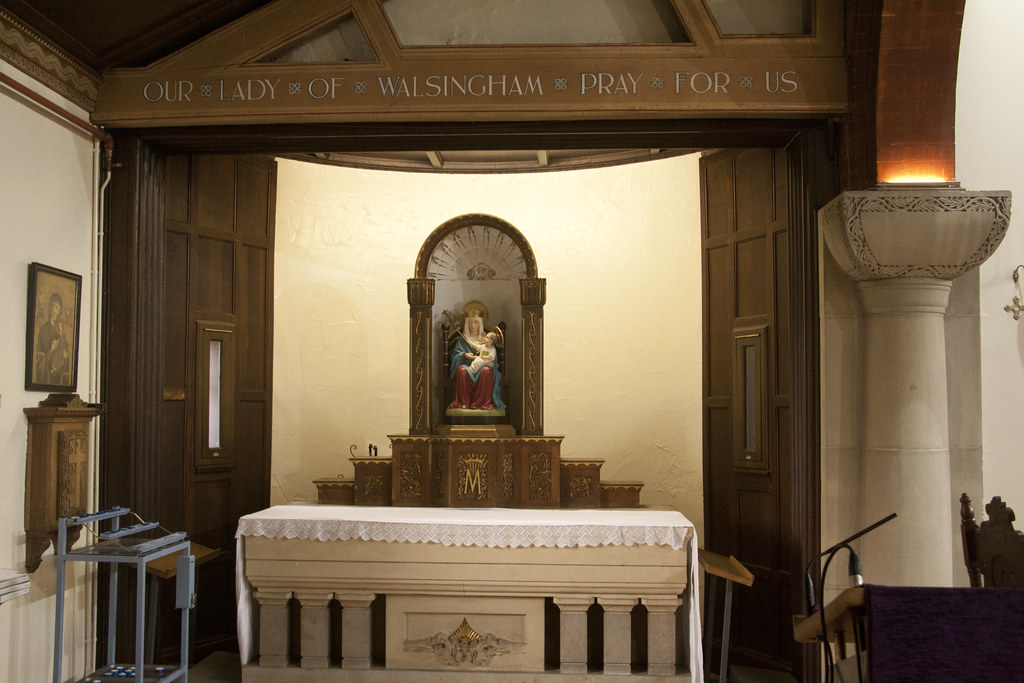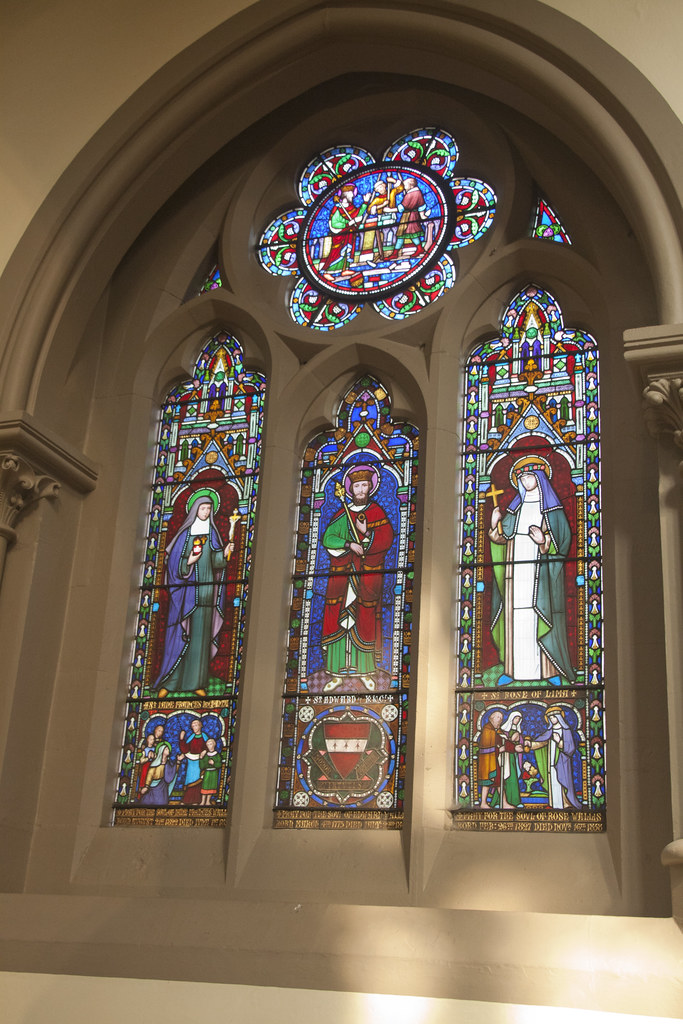 |
| Side Altar reredos at St Wilfrid's, York |
The LMS Pilgrimage to York is a great chance to appreciate properly the achievements of our predecessors in the faith in that part of the country: St Wilfrid's, the Shrine of St Margaret Clitherow, the Bar Convent, the English Martyrs church: these didn't build themselves, they are each a great testament to the piety of York's Catholics, and in particular their concern for the martyrs.
 |
| St Margaret Clitherow, statue carried in procession |
Yorkshire was a great Catholic centre before the Reformation, with the great Cistercian Abbeys, and the fabulous York Minster itself. I visited two of the ruined Abbeys while up there (I'll blog about those too). It saw some serious organised opposition to the religious revolution under Henry VIII - the Dissolution was actually reversed, briefly, in York, during the
Pilgrimage of Grace in 1536 - and some very vigorous, bold, and imaginative work to maintain the Faith during penal times. Some of the recusant priests actually celebrated a Solemn Mass in York prison at one point - an absolutely brilliant stunt.
 |
| Side Altar at the Church of the English Martyrs, York |
St Margaret Clitherow was part of this Catholic resistance; she was brave, articulate, independent, and highly organised, as well as extremely pious. It is a great honour to have her, with the Welshman St Richard Gwyn, as a spiritual patron of the Latin Mass Society.
 |
Procession with a statue of St Margaret Clitherow and the LMS banner,
showing her and St Richard Gwyn | |
One of the great things about Catholicism is the way it embeds itself into local cultures. So many great Catholics in the North died for their allegiance to Rome, which was part of a totally authentic local religious culture. This connection with Rome went back to St Benet Biscop and St Wilfrid himself. It was Protestantism which was imposed on the North - Protestant enthusiasts from the Continent, the southern port cities and a bunch of Cambridge intellectuals - who had to use force, over centuries, to impose their will, without ever achieving complete success. And in the 19th Century, when the penal laws were relaxed, the Catholic Church was again manifested in fine buildings filled with expressions of local piety.
 |
| Stained glass window, St Wilfrid's |
I was very struck by this window in St Wilfrid's. Each panel depicts a saint who shares a name with a deceased person in whose honour it was clearly given: St Jane Frances Chantal, St Edward the Confessor, and St Rose of Lima. A remarkably cosmopolitan trio of saints. I was wondering whether the connection between the person honoured and the saints was just fortuitous - the person honoured might just happen to have been named Edward or Rose - then I noticed that the window depicting
St Jane Frances Chantal was in honour of a Jane Frances Wallis, who was born in 1822. That is too much of a coincidence. Her parents clearly had a devotion to the great mother, widow, foundress and friend of St Francis de Sales, and this connection was remembered a generation later by those who wished to keep her in mind after her death.
May the many saints of the North of England intercede for the Church today!





No comments:
Post a Comment